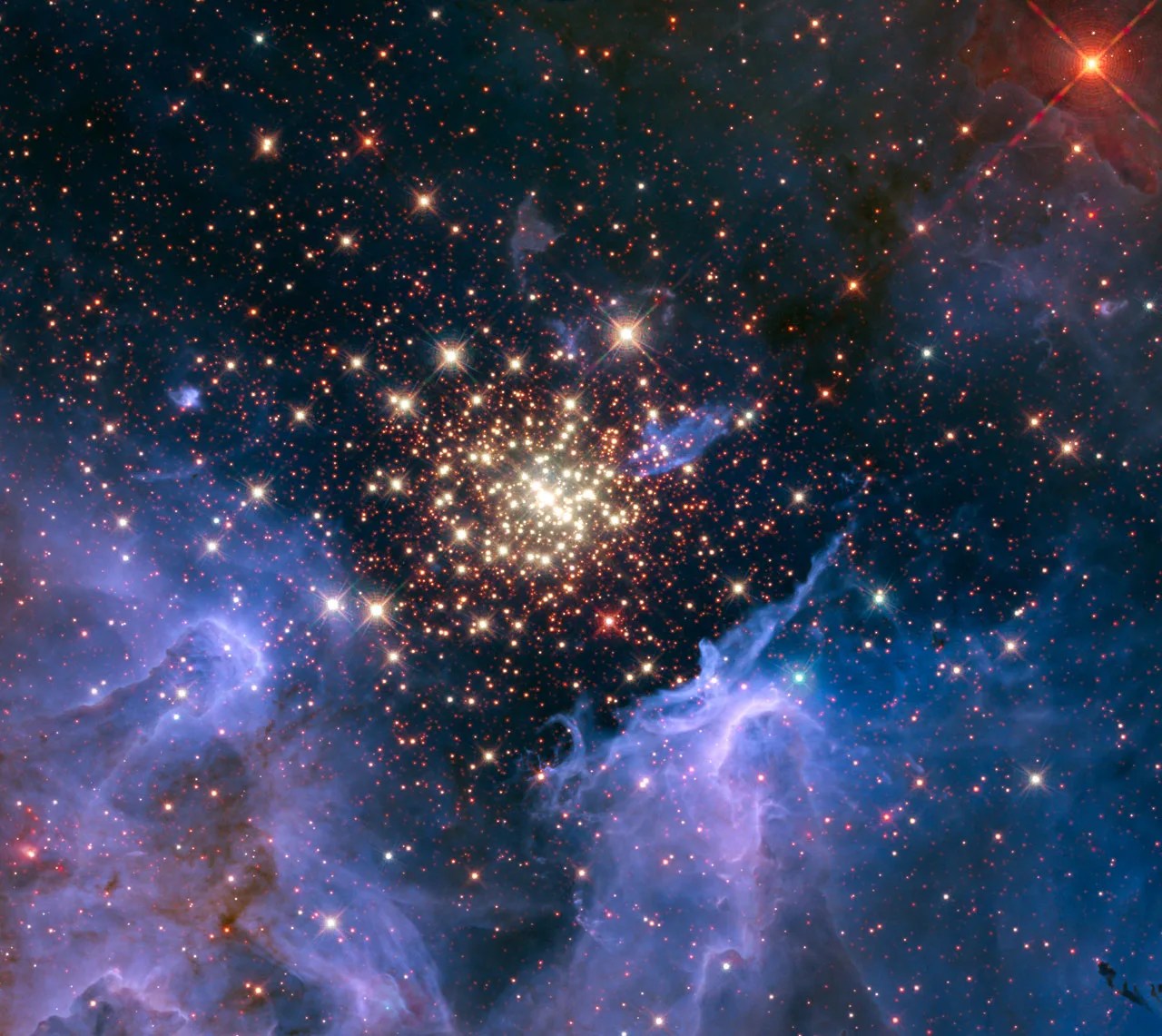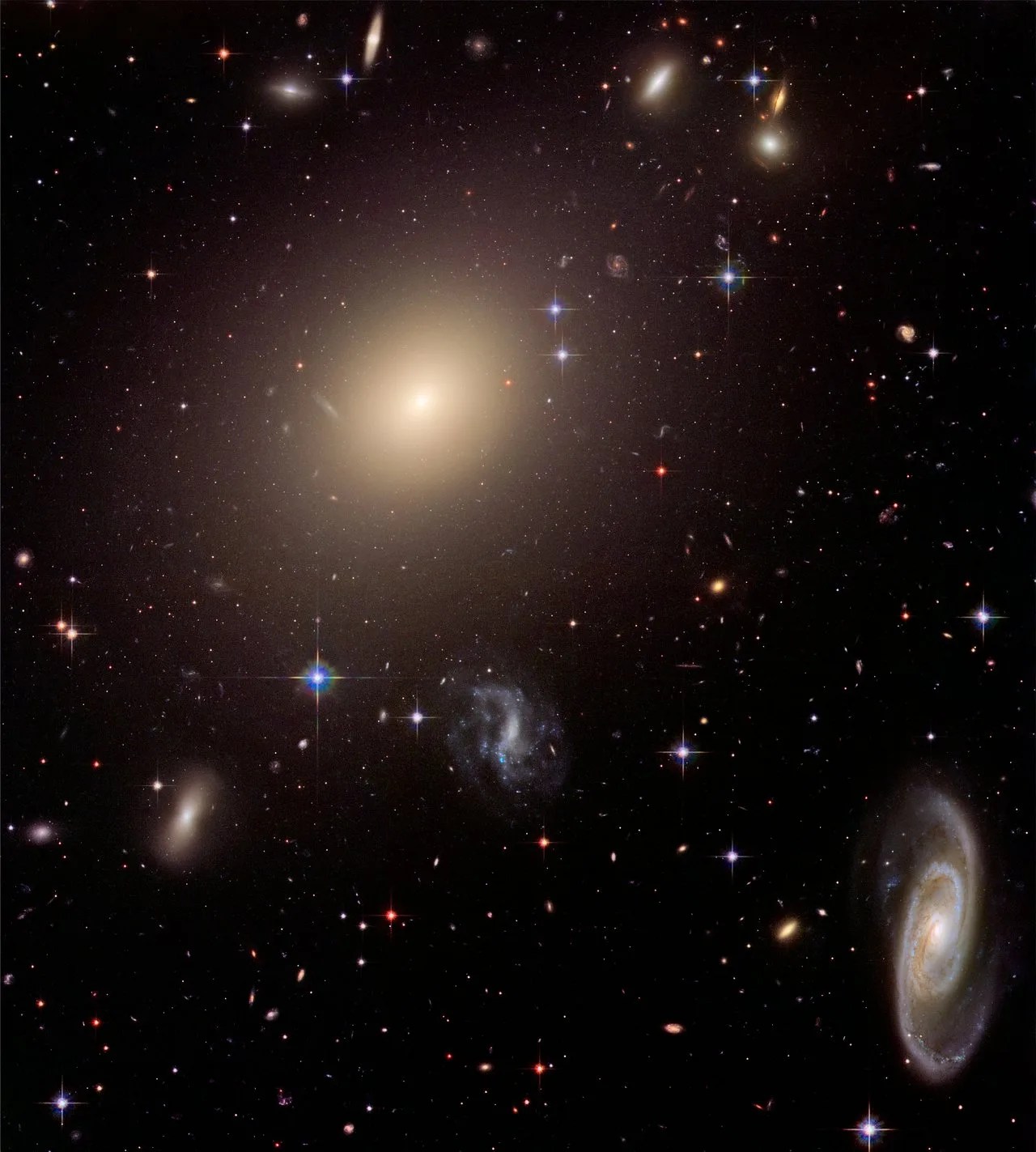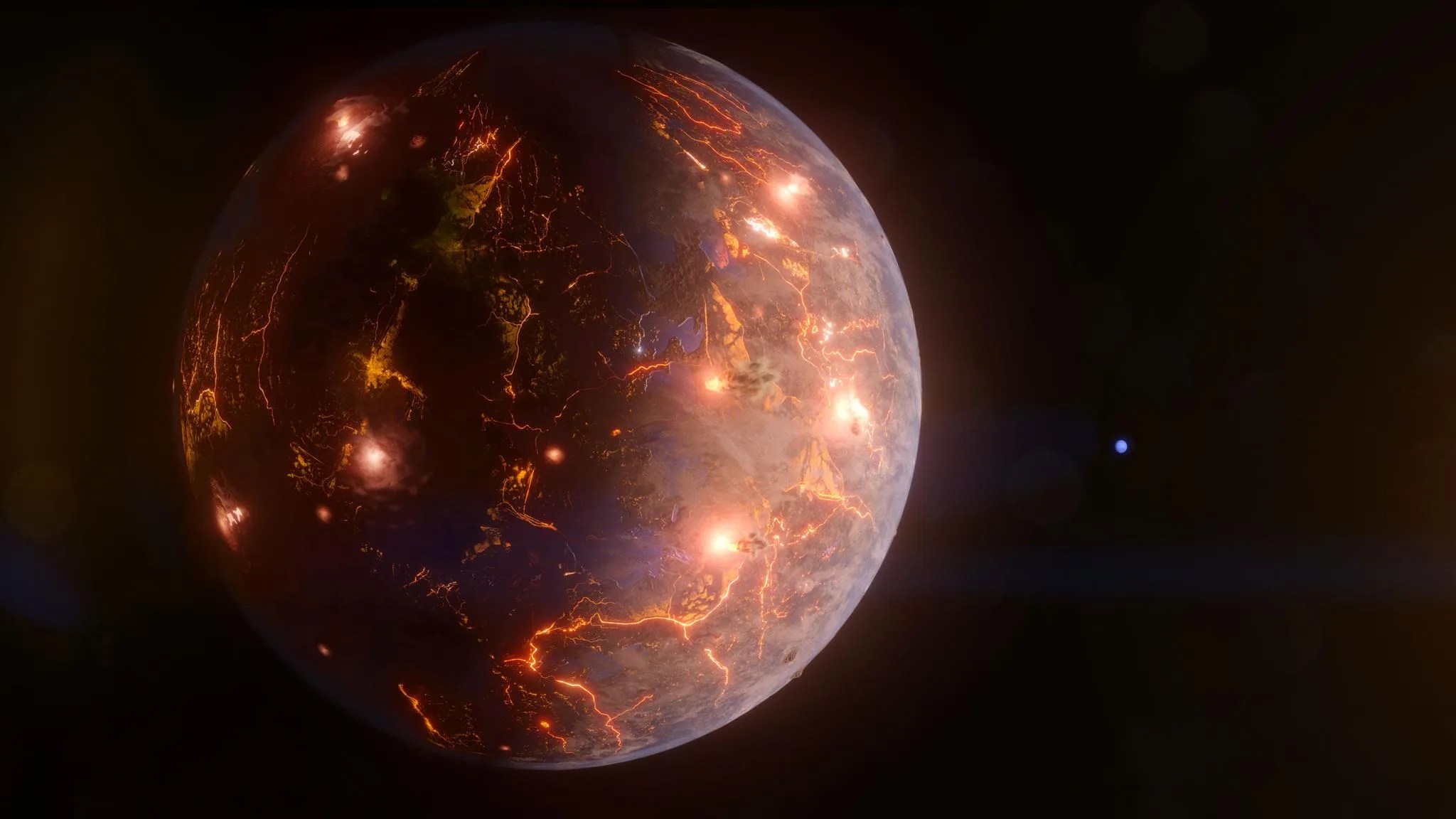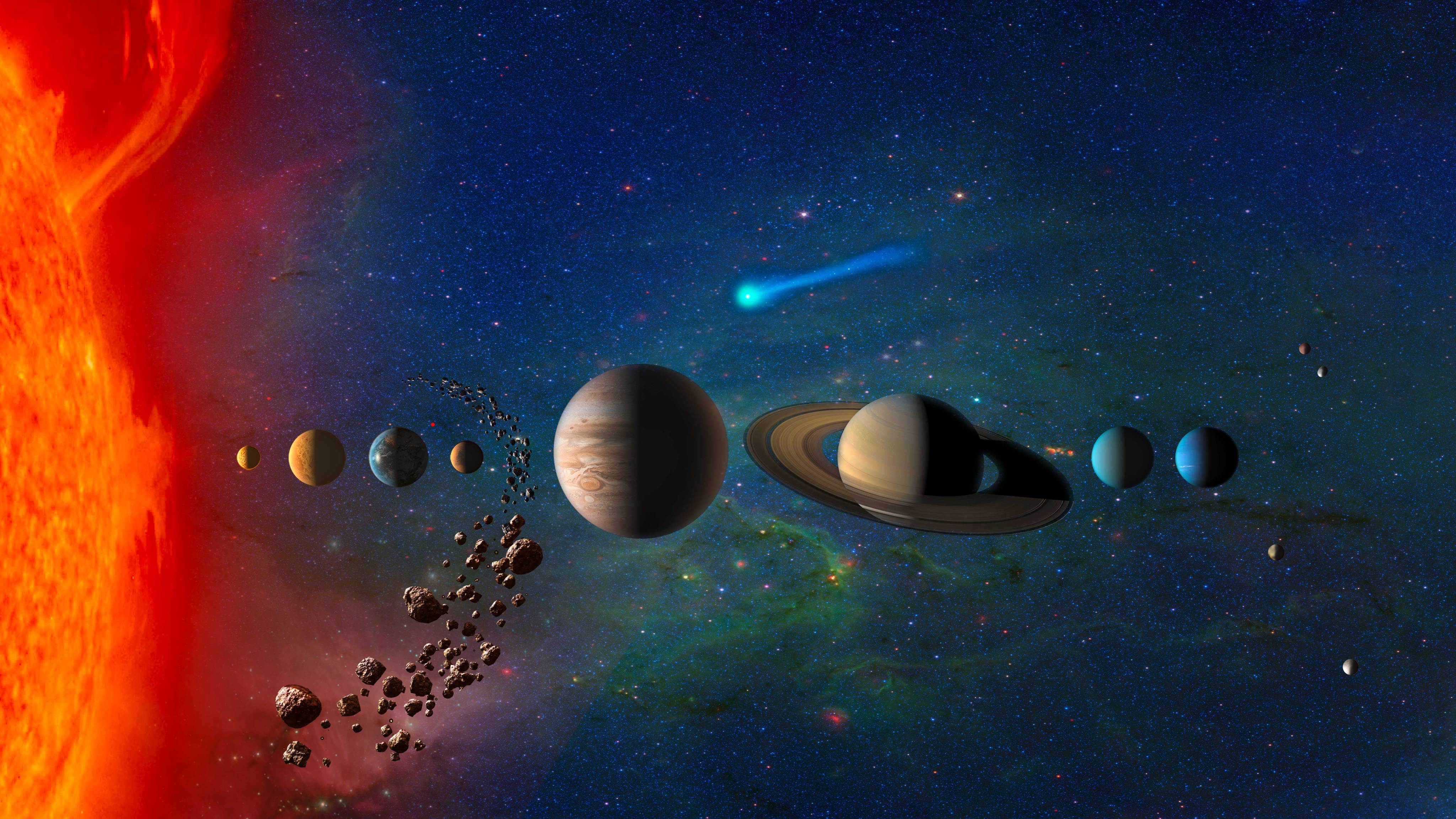2 min read
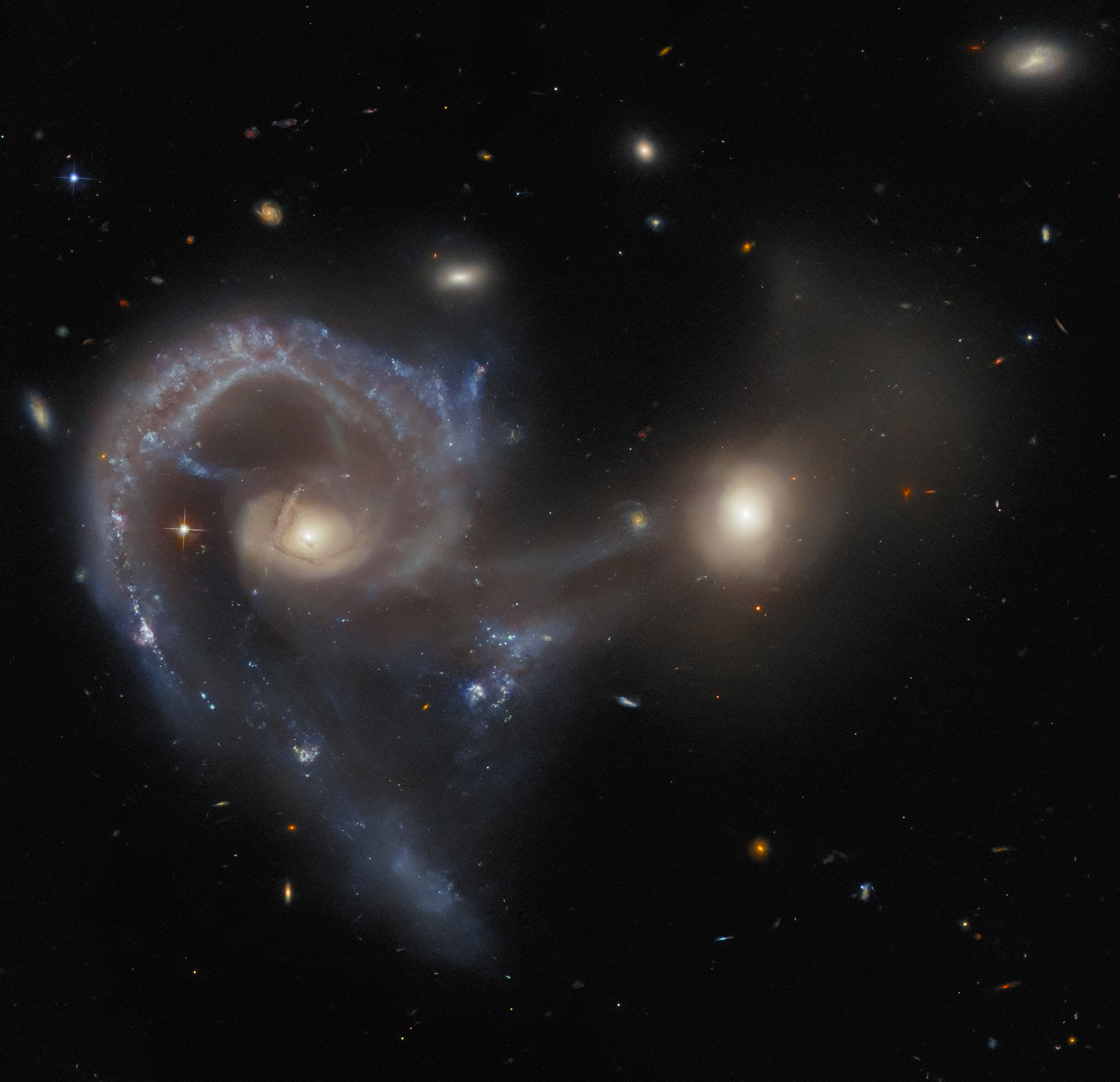
This image taken using the NASA/ESA Hubble Space Telescope’s Advanced Camera for Surveys (ACS) shows Arp 107, a celestial object that includes a pair of galaxies in the midst of a collision. The larger object (left) is an extremely energetic type of galaxy called a Seyfert galaxy. Seyfert galaxies house active galactic nuclei at their cores. Despite the active core’s immense brightness, it does not saturate the image and mask details in the galaxy’s structure. We can observe radiation from the entire galaxy, including its spiraling whorls, areas of star formation, and dust lanes. The whole galaxy is readily visible. The smaller companion (right) connects to the larger galaxy by a tenuous seeming ‘bridge’ of dust and gas. The colliding galactic duo lies about 465 million light-years from Earth.
Arp 107 is part of the Atlas of Peculiar Galaxies, a catalog of 338 galaxies compiled in 1966 by Halton Arp. Hubble captured the galactic pair as part of a program that took observations of Arp catalog members. One intention of the observing program was to provide images of these spectacular and not-easily-defined galaxies.
Text credit: European Space Agency (ESA)
Media Contact:
Claire Andreoli
NASA's Goddard Space Flight Center, Greenbelt, MD
claire.andreoli@nasa.gov

